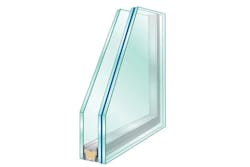Understanding Soundproof Windows and the Science Behind Them
Up until about the 1970s, windows with single-pane glass were fairly common. However, these have many drawbacks, including poor energy efficiency and, notably, less-than-ideal noise proofing. Upgrading to dual-pane windows can make a big difference, especially in places where noise abatement brings a better quality of life, such as in urban areas. However, it’s not just about keeping outdoor noise outside; homeowners also want to keep inside noise indoors, something that’s particularly important in heavily populated areas, both to prevent contributing to noise pollution and to help maintain privacy.
While triple-pane windows can offer even greater noise abatement, that additional pane of glass probably won’t provide an equivalent degree of soundproofing as going from a single-pane to a dual-pane option. Instead, when soundproofing is important, experts suggest you go with dual-pane windows that have thicker glass, such as laminated panes, or ones that use two different thicknesses of glass.
Because sound travels through vibration, a window that is built to inhibit that will help to block it. That’s why two panes with air between them muffle the transmission of sound, either inside to outside, or outside to inside. More about how that works in a moment.
Types of Sound Reducing Glass in Windows
There are two ways of measuring how well glass inhibits sound transmission:
- STC, or sound transmission class: This metric measures how well the window blocks interior noises from being heard outside, like conversations, television or music playing.
- OITC, or outdoor-indoor transmission class: This measures how much outside noise the window transmits inside. This includes things like traffic, barking dogs, construction noise and airplanes.
STC grading is measured by a two-digit number; STC 30 is the grade assigned to most dual-pane windows, although anything over that provides a significant reduction in noise transmission. At STC 36 and above, even loud conversations are barely audible. For both measurements, the higher the number, the better the level of sound reduction.
The illustration above shows a cross-section example of a dual-pane window with laminated glass. The laminated glass helps reduce sound more effectively than non-laminated dual-pane glass.
It’s not just about having two panes of glass, however. Noise abatement depends upon how the window is manufactured. Andersen’s 100 Series and E-Series dual-pane windows offer two different thicknesses of panes on the same window, a design which helps muffle sound. Two panes of the same thickness will vibrate at the same frequency, which leads to more sound transmission, but if they’re not the same, they will vibrate differently, effectively canceling out some of the soundwaves.
In addition, laminated glass, which is available on both window and door products from Andersen, does a good job of controlling the vibrations of sound because it is made like a sandwich, with two sheets of glass and a vinyl partition between them. In a dual-pane window, typically only one of the panes is laminated, which makes it more rigid and far less likely to vibrate. Laminated glass also provides shatter resistance for enhanced safety.
Of course, how well the window is installed impacts how well it inhibits noise. That’s also a key factor in optimal energy efficiency and leak prevention.
Better Sound Abatement, Greater Peace of Mind
The right windows perform many important functions, but noise abatement is of particular importance to getting a good night’s sleep, something essential for good health. Consider Andersen’s lines of STC upgraded and laminated glass windows in your next project. In addition to providing customers with more secure and energy efficient homes, they will experience less noise intrusion, improved privacy — and better sleep.


